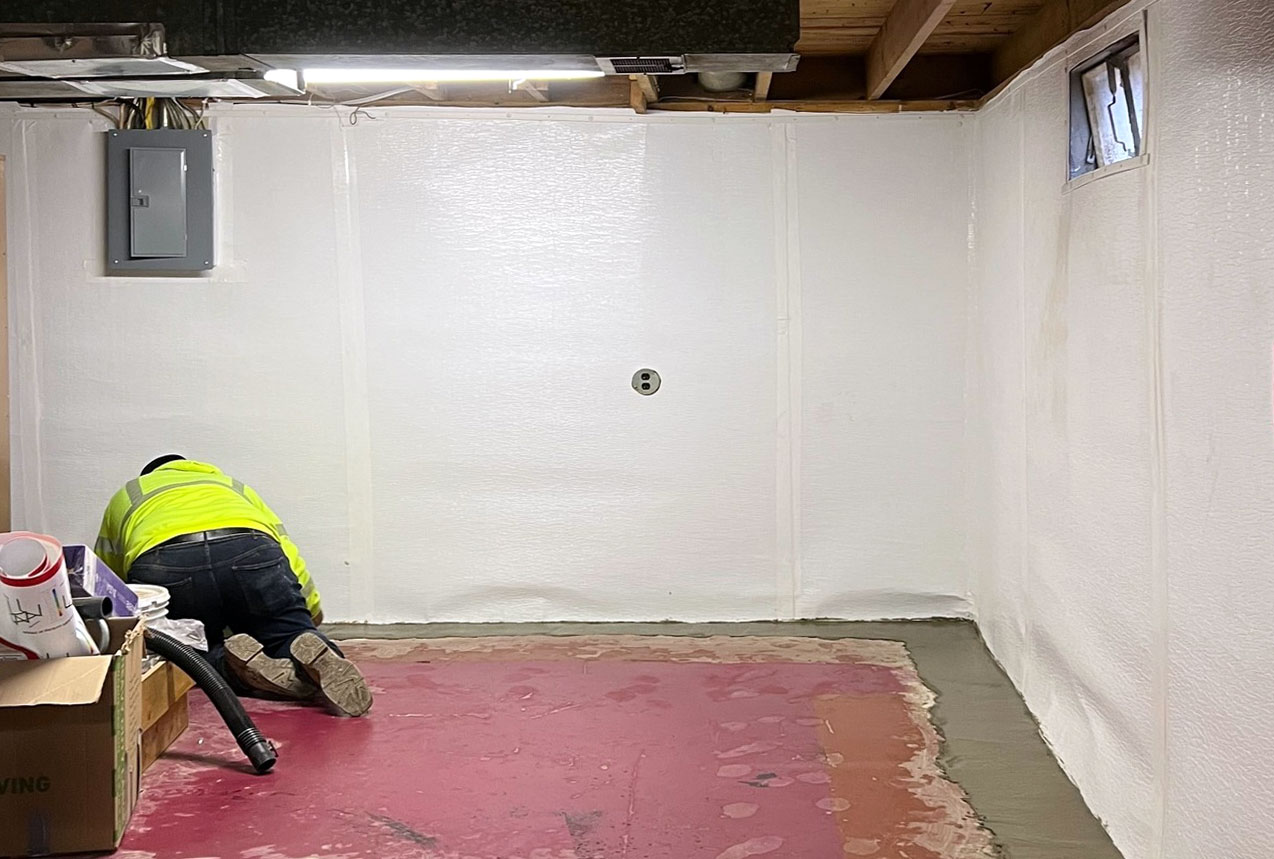Water damage is a common and costly issue that homeowners face, particularly in basements. Basement waterproofing is a crucial step in preventing water infiltration and preserving the structural integrity of your home. In this article, we will explore the importance of basement waterproofing, discuss key statistics related to water damage, delve into effective methods and solutions to keep your basement dry and secure, and provide additional tips for maintaining a healthy basement environment.
The Impact of Water Damage
- Statistics on Water Damage: According to the Insurance Information Institute, water damage is one of the most common causes of homeowners’ insurance claims. Consider the following statistics:
- Water damage accounts for nearly 30% of all property damage claims.
- The average insurance claim for water damage amounts to $10,000.
- 14,000 people in the U.S. experience a water damage emergency every day.
- Plumbing failures and appliance issues are the leading causes of water damage.
- Basement Vulnerabilities: Basements are particularly susceptible to water damage due to their below-ground level position. Factors such as hydrostatic pressure, poor drainage systems, cracks in foundation walls, and inadequate waterproofing can contribute to basement leaks and flooding. These issues not only compromise the foundation but also create an environment conducive to mold growth, which poses health risks to occupants.
Basement Waterproofing Solutions
- Exterior Waterproofing: This method involves excavating the soil around the foundation to expose the exterior walls. The walls are then sealed with a waterproof membrane or coating to prevent water infiltration. Exterior waterproofing is highly effective but can be costly due to the labor-intensive nature of the process.
- Interior Waterproofing: Interior waterproofing focuses on managing water that has already penetrated the basement. It typically involves installing a drainage system, such as a French drain or sump pump, to collect and redirect water away from the foundation. Interior waterproofing is generally more affordable than exterior methods, making it a popular choice for homeowners.
- Crack Injection: Cracks in the foundation walls are common entry points for water. Crack injection involves injecting specialized materials, such as epoxy or polyurethane, into the cracks to create a waterproof barrier. This technique effectively seals the cracks and prevents further water infiltration.
- Proper Grading and Drainage: Ensuring proper grading and drainage around your home is crucial in preventing water from pooling near the foundation. Improving the slope of the soil away from the house, installing downspout extensions, and maintaining clean gutters can help direct water away from vulnerable areas.
Benefits of Basement Waterproofing
- Protection Against Structural Damage: Basement waterproofing prevents water from seeping into the foundation and causing structural damage. By maintaining a dry environment, you preserve the integrity of your home’s foundation and avoid costly repairs in the future.
- Prevention of Mold and Mildew: Excessive moisture in basements creates an ideal breeding ground for mold and mildew. These microorganisms not only damage your belongings but also pose health risks. Basement waterproofing reduces humidity levels and prevents mold growth, safeguarding the health of your family.
- Increased Property Value: A waterproofed basement adds value to your property. Potential buyers are more likely to be attracted to a home that has a dry and functional basement, making it a worthwhile investment for homeowners planning to sell their property in the future.
Additional Tips for a Healthy Basement Environment
- Regular Maintenance: Keep your basement well-maintained by inspecting it regularly for signs of water damage, such as damp spots, musty odors, or visible mold. Address any issues promptly to prevent further damage.
- Proper Ventilation: Ensure that your basement is adequately ventilated to reduce moisture levels. Poor air circulation can contribute to the buildup of humidity, which can promote mold growth. Consider using dehumidifiers or fans to improve airflow in the space.
- Monitor and Address Foundation Cracks: Periodically inspect your basement walls for any new cracks or signs of deterioration. Cracks can worsen over time and become potential entry points for water. If you notice any cracks, consult a professional to assess the severity and recommend appropriate repairs.
- Maintain Gutters and Downspouts: Keep your gutters and downspouts clean and in good condition. Clogged or damaged gutters can lead to water overflow, which can saturate the soil around your foundation. Regularly clean them to ensure proper water drainage away from your home.
- Landscaping Considerations: Pay attention to your landscaping choices around your home. Avoid planting trees or shrubs with invasive root systems too close to your foundation, as they can disrupt the integrity of your basement walls. Additionally, consider incorporating landscaping features that promote water drainage away from your home, such as sloping flower beds or gravel trenches.
- Emergency Preparedness: Despite taking preventive measures, unexpected water incidents can still occur. Equip your basement with a sump pump backup system, and consider installing a water alarm or flood sensor to provide early warning signs of water intrusion. Having an emergency plan in place can help you respond quickly and minimize potential damage.
Conclusion
Basement waterproofing is an essential measure to protect your home from water damage. By addressing vulnerabilities and employing effective waterproofing solutions, you can safeguard your basement, preserve the structural integrity of your property, and prevent health hazards associated with mold growth. Whether you choose exterior or interior waterproofing methods, investing in basement waterproofing offers long-term benefits and peace of mind that your home is secure and protected against water damage.
Contact us today for your free inspection!
For more tips for keeping your home in it’s best shape, read more of our blogs here!

